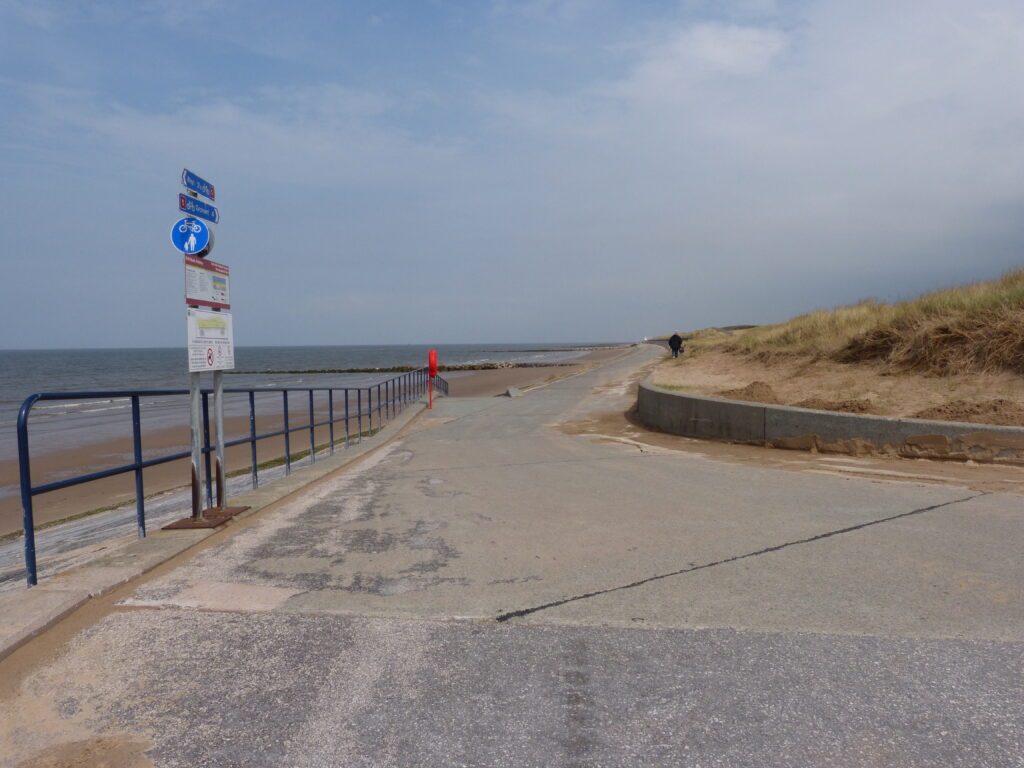The Annexation of Meliden Beach
The Tenth Commandment – “You Shall Not Covet”
When returning home to Meliden from Dyserth one day in the 1960s I noticed that there was a new blue signboard opposite to where the mining artefacts are now. It welcomed people to PRESTATYN. That insensitive sign generated so many column inches in the Prestatyn Weekly that the editor eventually closed the correspondence.
When did the annexation of Meliden commence? Once upon a time Prestatyn and Nant were hamlets in the Parish of Meliden but grew so much that in 1896 independence was declared and the Prestatyn Urban District Council was created. Meliden went on its own sweet way with a smaller Parish Council—the use of the word Parish by this time just defined the area and no longer indicated of any power exerted by vicars and wardens—in theory. Meliden lost ecclesiastical control over Prestatyn and Nant in 1860 when the Parish of Prestatyn was created and the new Christ Church on the High Street was consecrated in May 1863.
In 1909, the P.U.D.C. put a Bill through Parliament to take over the privately owned gasworks and improve the existing water supply. It also sought powers to build a town hall and oversee certain civic duties. The Bill would allow the Council to take control of sea bathing, promenades, new streets, pruning of trees overhanging roads, drains, sewers, Sunday trading, street cries and noises, street musicians—and the frying of fish.
One might have thought that the councillors could have slept soundly at night knowing that they controlled the frying of fish and street musicians—but no. Meliden had something that the P.U.D.C. really coveted—not our houses, wives, servants, oxen or even our donkeys—the council coveted our beach! In those days the seashore from the Ffrith to the Lido, sorry, Nova was in the Parish of Meliden—it was known as Meliden Beach. There had been recent bathing fatalities and it was thought that there should be one set of regulations to cover bathing at Meliden and Prestatyn. The P.U.D.C. claimed it had no wish to acquire the foreshore, it simply wished to control it. Meliden had a council but there were certain matters that came under a higher authority and that was the St. Asaph Rural District Council. The P.U.D.C wrote a letter to the the St. Asaph Rural District Council asking for permission to take control of Meliden Beach.
When the matter came before the St. Asaph Rural District Council, the clerk repeated assurances that there was no intention on the part of the P.U.D.C to acquire any portion of the Meliden foreshore. It merely desired to enter into agreement with the St. Asaph Rural District Council to regulate it. One far-sighted councillor provoked laughter when he expressed a hope that the P.U.D.C. was not contemplating anything further.
There was support for the application—provided that the Meliden councillor agreed and it was done in the hope of preventing drownings. Another councillor suggested that ‘When Meliden became an important watering place on its own account—(a voice, ‘Or Cwm,’ and laughter)—they could terminate the arrangement now asked for and give the Prestatyn Council notice to clear out.’
The 1909 incursion was not serious but in 1934 Meliden could not raise enough money from the rates to undertake a very expensive capital project—the sewers. It was the 1930s so we fell victim to a time honoured solution—we were annexed by a neighbouring power!

